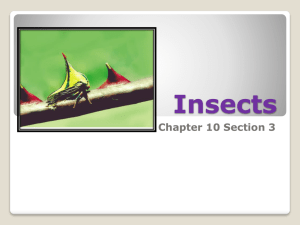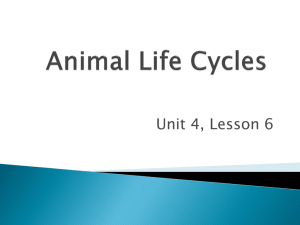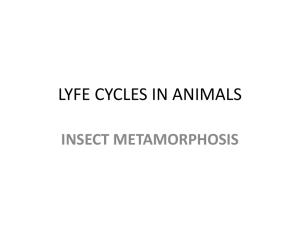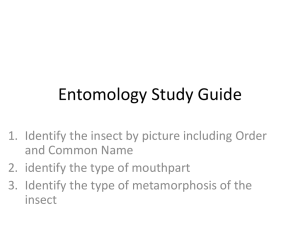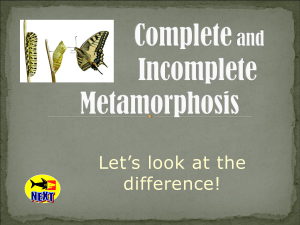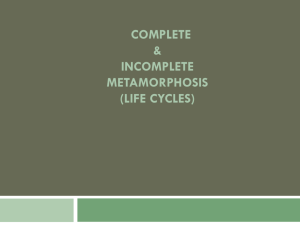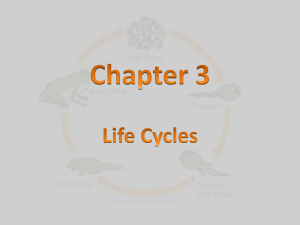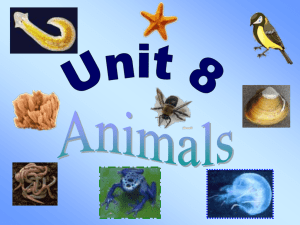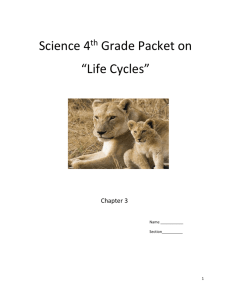Understanding Insect Life Cycles
advertisement
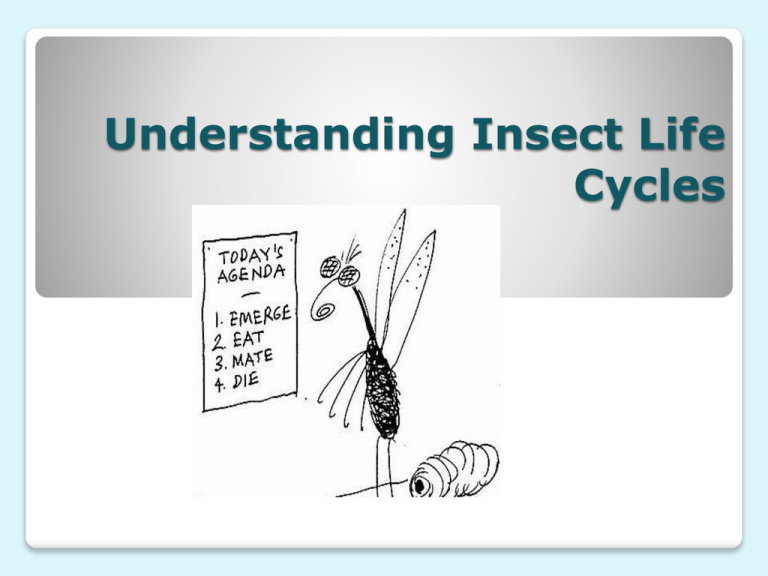
Understanding Insect Life Cycles A life cycle is the continuous sequence of changes undergone by an organism from beginning of life till death. Baby Toddler Child Teenager Adult What is a Life Cycle? Metamorphosis : refers to the different patterns of development or series of stages within a life cycle. 3 types of insect metamorphosis ◦ Complete ◦ Incomplete ◦ No metamorphosis Metamorphosis Egg Larva Pupa Adult Complete Metamorphosis 1.Egg: insects lay eggs on leaves, in trees, animal carcasses and in water. Some insect eggs serve as time capsules to help the population survive harsh conditions, not hatching until the conditions improve. Complete Metamorphosis 2. Larva: the immature, wingless, feeding stage of an insect that undergoes complete metamorphosis. Grubs, maggots and caterpillars are insect larvae. Larva Pupa 3. Pupa: an insect in the nonfeeding, usually immobile, transformation stage between the larva and the adult. Adult: Adults look very different after they immerge from the pupa. Adult Egg Wingless Nymph Wingless Nymph Incomplete Metamorphosis Adult Nymph: the young of an insect that undergoes incomplete metamorphosis. Instars: A stage of an insect or other arthropod between molts. Some insects go through as many as 16 instars before becoming an adult. Adult: Look similar to the nymph but hasn’t gone through a pupal stage. Egg Nymph No Metamorphosis Adult Young : The young of no metamorphosis insects are different in that they look exactly like the adult but may not have the reproductive organs. Silver fish and Springtails have this metamorphosis. Aphids have a strange life cycle. Some aphids are born live. They do not have an egg stage. Aphids Metamorphosis based on Orders: No Metamorphosis- Thysanura Incomplete Metamorphosis- Orthoptera Hemiptera Homoptera Dermaptera Thysanoptera Isoptera Phthirptera Odonata Complete Metamorphosis- Siphonoptera Neuroptera Hymenoptera Diptera Lepidoptera Coleoptera
